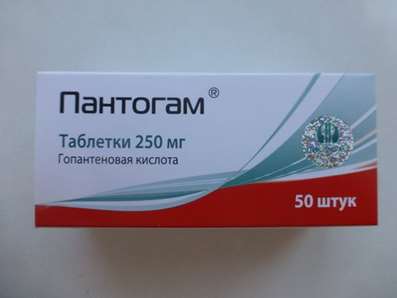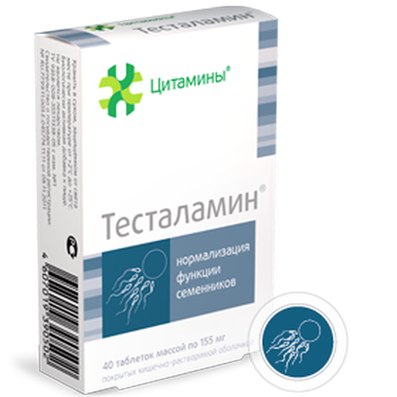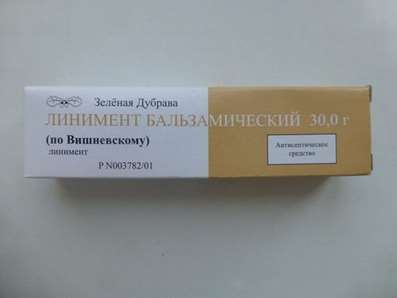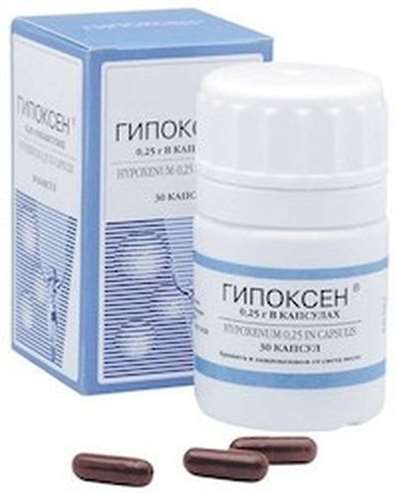Instruction for use: Spasmex
I want this, give me price
Active substance: Trospium chloride
ATX Code
G04BD09 Trospium chloride
Pharmacological group
M-Holinoblokator [m-anticholinergics]
The nosological classification (ICD-10)
F98.0 Enuresis inorganic nature
Urinary incontinence., Urinary incontinence etiology nonhormonal, Urinary incontinence inorganic etiology, Functional enuresis in children, Children's enuresis
N30 Cystitis
urethrocystitis, recurrent cystitis, fibrous cystitis, cystopyelitis, Exacerbation of chronic cystitis, Acute bacterial cystitis
N31.1 Reflex neuropathic bladder, not elsewhere classified
hyperreflexia, Overactive Bladder, detrusor hyperreflexia, detrusor hyperreflexia
N31.2 neurogenic bladder weakness, not elsewhere classified
Urinary incontinence in a stressful situation, Atony of bladder, Atony of the bladder (the sphincter) (neurogenic), Impaired function of the sphincter of the bladder, Neurogenic bladder disorders, Neurogenic bladder disorder, Neurogenic bladder, Functional insufficiency of the sphincter of the bladder, Imperative incontinence
N31.8 Other neuromuscular dysfunction of the bladder
Idiopathic hyperactivity detrusor, Neurogenic detrusor hyperactivity
N39.3 Involuntary urination
Urinary incontinence in women, Anishuriya, Urinary incontinence
N39.4 Other specified types of urinary incontinence
Urinary incontinence, Bed-wetting, Frequent nocturnal urination, Urinary incontinence in women, Anishuriya, Primary nocturnal enuresis, Primary nocturnal enuresis in children
R32 Urinary incontinence unspecified
daytime enuresis, Idiopathic bladder instability, Urinary incontinence, nocturia, The disorder of the bladder sphincter function, Spontaneous urination, Mixed forms of urinary incontinence, Functional disorders of micturition, Functional micturition disorders, Functional enuresis in children, Enuresis
R35 Polyuria
Pollakuria, Night pollakiuria, Pollakiuria and nocturia, Night polyuria, Acute polyuria
R39.1 Other difficulties with micturition
Frequent urination, urinary retention, strangury, Obstructed flow of urine, Violation of urination, Violation of urination, Violation of bladder emptying, Violation of the outflow of urine, Frequent urination, Abnormalities of urination
Structure and Composition
Tablets 1 table.
active substance:
Trospium chloride 5 mg
Auxiliary substances: lactose monohydrate - 170 mg; Corn starch - 55.5 mg; Sodium carboxymethyl starch - 15 mg; Stearic acid - 3 mg; Povidone 25,000 - 1 mg; Silicon dioxide colloidal - 0.5 mg
Tablets, coated with a film membrane 1 tab.
active substance:
Trospium chloride 15 mg \30 mg
Auxiliary substances: lactose monohydrate - 100/100 mg; MCC - 75/60 mg; Corn starch - 44/41 mg; Sodium carboxymethyl starch - 10/10 mg; Stearic acid - 2/5 mg; Povidone 25,000 - 1/1 mg; Silicon dioxide colloid - 3/3 mg
Membrane film: hypromellose - 6.24 / 6.24 mg; Titanium dioxide - 1.44 / 1.44 mg; MCC - 0.96 / 0.96 mg; Stearic acid 0.96 / 0.96 mg
Description of dosage form
Tablets, 5 mg: round, biconcave, white or almost white.
Tablets, 15 and 30 mg: round, biconcave, film-coated white or almost white, with a risk.
On the break (for tablets 15 and 30 mg): the core and film shell is white or almost white.
pharmachologic effect
The pharmacological action is spasmolytic.
Pharmacodynamics
Trospium chloride is a quaternary ammonium base, belongs to the group of m-holinoblokatorov. It is a competitive antagonist of acetylcholine on the receptors of postsynaptic membranes of smooth muscles. Has a high affinity for m1- and m3-cholinergic receptors. Reduces the increased activity of detrusor of the bladder. Has spasmolytic and some ganglioblokiruyuschee effect. Does not have central effects.
Pharmacokinetics
After ingestion Tmax - 4-6 hours T1 / 2 - 5-18 hours, does not cumulate. Binding to plasma proteins is 50-80%. Concentration of trospium chloride with a single oral intake of 20-60 mg is proportional to the dose taken. The predominant amount of tropia chloride is excreted by the kidneys in unchanged form, the smaller part (about 10%) in the form of spiroalcohol - metabolite, formed during the hydrolysis of ester bonds.
Indications
Bladder hyperactivity accompanied by urinary incontinence, mandatory urges to urinate and increased frequency of urination (with idiopathic hyperactivity detrusor non-hormonal and inorganic etiology);
Mixed forms of urinary incontinence;
Spastic neurogenic disorders of the bladder function (with neurogenic hyperactivity / hyperreflexia detrusor: multiple sclerosis, spinal trauma, congenital and acquired spinal cord diseases, strokes, parkinsonism);
Detrusor-sphincter-dissynergy against intermittent catheterism;
Pollakiuria, nocturia;
Night and daytime enuresis;
In the complex therapy of cystitis, accompanied by imperative symptoms.
Contraindications
Hypersensitivity to the components of the drug;
Narrow-angle and angle-closure glaucoma;
Tachyarrhythmia, myasthenia gravis;
Retention of urine;
Delay in the evacuation of food from the stomach and the conditions predisposing to its development;
Renal failure requiring dialysis (Cl creatinine <10 ml / min / 1.73 m2);
Intolerance to galactose, deficiency of lactase, glucose-galactose malabsorption;
Children's age (up to 14 years).
With caution: SSS diseases, in which an increase in heart rate may be undesirable - atrial fibrillation, tachycardia, chronic heart failure, coronary heart disease, mitral stenosis, hypertension, acute bleeding; Thyrotoxicosis (possibly strengthening tachycardia); Elevated body temperature (may still increase due to suppression of sweat glands activity); Reflux esophagitis, hernia of the esophagus of the diaphragm, combined with reflux esophagitis (decreased esophageal and gastric motility and relaxation of the lower esophageal sphincter may contribute to a slowdown in gastric emptying and increased gastroesophageal reflux through the sphincter with impaired function); Gastrointestinal diseases accompanied by obstruction - achalasia and stenosis of the pylorus (there may be a decrease in motor and tone, leading to obstruction and delay in stomach contents); Atony of the intestine in elderly patients or weakened patients (possible the development of obstruction), paralytic ileus (possible the development of obstruction); Diseases with increased intraocular pressure - open-angle glaucoma (mydriatic effect may cause some increase in intraocular pressure, correction of therapy may be required), age over 40 (risk of undiagnosed glaucoma); Ulcerative colitis (high doses can inhibit the intestinal peristalsis, increasing the probability of paralytic intestinal obstruction, and possibly the manifestation or aggravation of such a serious complication as a toxic megacolon); Dry mouth (prolonged use may cause further intensification of xerostomia); Kidney failure (risk of side effects due to decreased excretion); Chronic lung diseases, especially in children and weakened patients (a decrease in bronchial secretion can lead to a thickening of the secret and the formation of congestion in the bronchi); Myasthenia gravis (the condition may worsen due to inhibition of the action of acetylcholine); Autonomic (autonomic) neuropathy (urinary retention and paralysis of accommodation may be intensified); Hyperplasia of the prostate without obstruction of the urinary tract, urinary retention or predisposition to it, or diseases accompanied by obstruction of the urinary tract (including the bladder neck due to prostatic hypertrophy); Gestosis (hypertension is possible); Brain diseases in children (effects from the central nervous system may be intensified); Down's disease (possibly an unusual dilated pupil and increased heart rate); Central paralysis in children (reaction to anticholinergic drugs may be most pronounced); liver failure.
pregnancy and lactation
During pregnancy and during breastfeeding, the drug should be used if the intended benefit to the mother exceeds the potential risk to the fetus or the baby.
Side effects
Frequency of occurrence (number of cases: number of observations): often - more than 1: 100; Infrequently - 1: 100-1000; Rarely - less than 1: 1000.
From the CCC: infrequent - tachycardia; Rarely - chest pain, fainting, tachyarrhythmia, hypertensive crisis.
From the gastrointestinal tract: often - dry mouth, indigestion, constipation, nausea, abdominal pain; Infrequently - diarrhea, bloating; Rarely - gastritis.
From the nervous system: rarely - confusion, hallucinations.
From the side of the musculoskeletal system: rarely - acute necrosis of skeletal muscles.
From the side of the organ of vision: infrequently - a violation of accommodation.
On the part of the urinary system: infrequently - a violation of emptying the bladder; Rarely - urinary retention
From the hepatobiliary system: rarely - a slight or moderate increase in the activity of transaminases.
On the part of the immune system: infrequently - skin rash; Rarely - anaphylactic reactions, Stevens-Johnson syndrome.
Interaction
With the simultaneous use of trospium chloride, enhances the m-cholinoblocking effect of amantadine, tricyclic antidepressants, quinidine and disopyramide, antihistamines, and a positive chronotropic effect of β-adrenomimetics (see Contraindications).
Trospium chloride weakens the effect of prokinetics (metoclopramide and cisapride); Has an effect on the motor and secretory functions of the digestive tract, changing the absorption of simultaneously used drugs.
With simultaneous administration of drugs containing substances such as guar, colestyramine and colestipol, a decrease in the absorption of trospium chloride is possible.
There was no interaction between trospium chloride and cytochrome P450 isoenzymes (CYP1A2, 2A6, 2C9, 2C19, 2D6, 2E1, 3A4), since trospium chloride is metabolized only in small amounts, and the main way of its metabolism is the hydrolysis of esters.
Dosing and Administration
Inside, before eating, without chewing, squeezed enough water.
Tablets, 5 mg
Adults and children from 14 years of age, the drug is administered individually, depending on the clinical picture and severity of the disease.
The drug is taken on 2-3 tablets. 3 times a day (30-45 mg) at intervals of 8 hours. At a daily dose of 45 mg, it is acceptable to take 30 mg in the morning and 15 mg in the evening.
Tablets, film-coated, 15 mg
The drug is taken in 1 table. 3 times a day (45 mg) at intervals of 8 hours.
Tablets, film-coated, 30 mg
The drug is taken in 1/2 table. 3 times a day or 1 table. In the morning and 1/2 tablets in the evening (45 mg).
In patients with renal insufficiency (Cl creatinine 10-30 ml / min / 1.73 m2) the daily dose of the drug should not exceed 15 mg.
On average, the duration of treatment is 2-3 months. If a longer treatment is required, the question of continuing treatment is reviewed by the doctor every 3-6 months.
Overdose
Symptoms: increased anticholinergic effects, such as visual impairment, tachycardia, dry mouth and hyperemia of the skin.
Treatment: gastric lavage and intake of adsorbents (including activated charcoal), instillation of pilocarpine in patients with glaucoma, catheterization of the urinary bladder with a delay in urine. In severe cases, appoint cholinomimetics (neostigmine methyl sulfate). In case of insufficient effect, severe tachycardia and / or instability of blood circulation, intravenous β-adrenoblockers are administered under the control of ECG and AD.
special instructions
Taking the drug in case of a violation of the internal sphincter function of the urethra or detrusor of the bladder should be accompanied by its complete release by catheterization. In vegetative disorders of the bladder, the cause of dysfunction should be determined before the treatment, organic causes of pollakiuria, nocturia and incontinence, such as heart failure, polydipsia, the possibility of urinary tract infection and bladder cancer, are excluded. They require the appointment of etiotropic therapy.
Influence on the ability to drive vehicles and work with moving machinery. At the beginning of treatment, with an increase in the dose of the drug, the replacement of the drug, as well as in the interaction with alcohol, visual impairment is possible, which should be taken into account when driving vehicles and working with moving mechanisms.
release Form
Tablets, 5 mg; Tablets, film-coated, 15 mg. In the blister of PVC / aluminum foil for 10 pcs. 3 or 5 blisters in a cardboard box.
Tablets, film-coated, 30 mg. In the blister of PVC / aluminum foil for 10 pcs. 3 blisters in a cardboard box.
Conditions of supply of pharmacies
On prescription.
Storage conditions
In dry, the dark place at a temperature of 15-25 ° C.
Keep out of the reach of children.
Shelf life
5 years.
Do not use after the expiry date printed on the package.

 Cart
Cart





